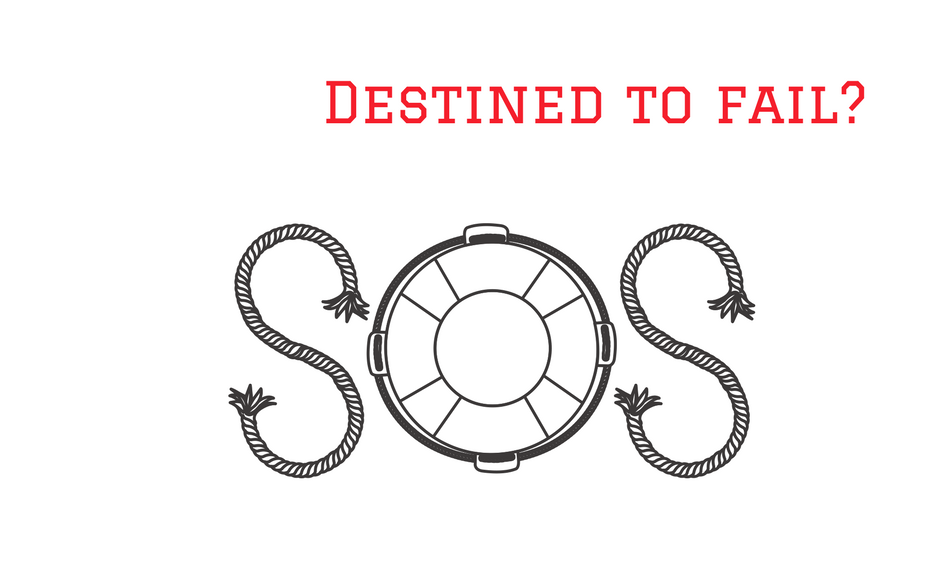How To Start A Business Destined To Fail
No one in his or her right mind sets out with the intention to start a business that is destined to fail. Still, many people unknowingly make preventable mistakes when they start a business, many of which greatly increase the probability that their businesses will fail.
Let’s jump right into five of the common mistakes I see entrepreneurs make that put their startup behind the eight ball from day one.
Start A Business Fatal Mistake #1
The easiest way to start a business that has a high probability of failure is to pay no attention to what prospects in your target market need, want, and most importantly, are willing to pay for. This is the “if I build it, they will come (and buy)” mistake that is repeated frequently by startup entrepreneurs. Many entrepreneurs build something that they would want (and maybe would even pay for), rather than building something that their target market wants and will open their wallet to pay for.
Start A Business Fatal Mistake #2
Another quick road to failure in a startup business is to base the business on a product or service that cannot be delivered profitably.
This mistake usually results from a combination of lack of necessary analysis of estimated profitability and unrealistic expectations regarding pricing the market will accept and embrace.
There is never certainty regarding pricing that will work in the near- and long-term, but that is not an excuse to not do pre-venture, direct research with prospective customers, nor is it an excuse to skip relatively simple, but informative exercises such as calculating the estimated break-even point.
Start A Business Fatal Mistake #3
Starting a business with inadequate funding is another way to create a business that is destined to fail. Although it will always be just an estimate, as unexpected costs will come up and most everything in a startup takes longer and costs more than expected, you must go through the process of estimating the capital needs of your business, at least for the first three years.
You need to understand if you have enough capital to fund the business until it reaches break-even and starts generating cash. If not, you will need to raise capital, and it will be important that you don’t wait until you need the cash badly, or worse yet, until it’s too late.
Remember, not all businesses fail because there is a lack of demand for their products; some businesses fail because they experience initial success that puts a strain on their cash flow and they cannot then raise enough money to keep the company going. Given the variety of funding sources available these days, it’s not as common as it used to be, but it does still happen. Don’t let it happen to your business because you haven’t taken the time to understand the likely funding requirements to get your business to break-even and beyond.
Start A Business Fatal Mistake #4
Running a startup that grows into a successful small business is not a battle; it is a war. It takes commitment and perseverance to provide the energy necessary to nurture your startup business from infancy to adulthood, or even just to adolescence. Typically, it is not possible to infuse such energy into your business on an ongoing business unless you are 100% committed to that business.
You must, therefore, believe in your heart of hearts, before you start the business, that growing the business is something to which you are 100% committed.
As in most endeavors, in the startup game, “dabbling is a root cause of failure”. You cannot and must not allow your attention or energy to be diluted by the many potential distractions (“shiny objects”) in today’s world, if you expect your startup to grow into a successful small business and beyond.
Start A Business Fatal Mistake #5
It typically takes time, sometimes even years, for a startup to gain critical mass and momentum in sales. As mentioned above, you need to do your best to estimate the break-even point and the expected timing of reaching that milestone. That said, you must also understand that it will likely take longer and require more investment than you expect to reach the break-even stage and move into positive cash flow.
So, the mistake you have to avoid here is pulling the plug on a potentially successful venture too early, because you don’t see immediate or very rapid success. That’s not to say it’s always the wrong move to pull the plug on a startup that is going nowhere, but before doing so, you have to make sure your expectations for speed to success are realistic. If you are gaining critical mass in your customer base, but it’s just taking a bit longer than expected, that may not be sufficient reason to abandon ship and declare the venture a failure. Do so only after careful review of the situation.




